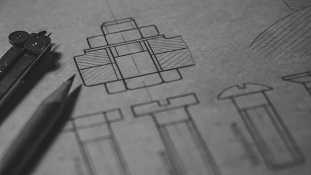Can you use low profile graphics cards for 3D modeling or CAD?
When it comes to 3D modeling and computer-aided design (CAD), having a dedicated graphics card is important for handling complex tasks and rendering high-quality visuals. However, not all graphics cards are created equal, and some are better suited for certain use cases than others. In this article, we’ll explore whether low profile graphics cards can be used for 3D modeling or CAD, and what advantages and disadvantages they may have.
First, let’s define what we mean by low profile graphics cards. These are graphics cards that are designed to be more compact and fit in smaller PC cases, typically with a height of around 2.5 inches or less. Low profile graphics cards are often used in small form factor (SFF) PCs, which are popular for home theater PCs (HTPCs) or for users who want a more compact desktop setup.
So, can you use low profile graphics cards for 3D modeling or CAD? The short answer is yes, you can. Low profile graphics cards can offer good performance for 3D modeling and CAD, depending on the specific card you choose. However, there are some potential advantages and disadvantages to consider when using a low profile graphics card for these applications.
Advantages of Low Profile Graphics Cards for 3D Modeling or CAD:
- Compact size: As mentioned, low profile graphics cards are designed to be more compact, which can be a benefit if you’re building a small form factor PC. This can be especially helpful if you’re working with limited desk space or want a more portable PC setup.
- Lower power consumption: Some low profile graphics cards have lower power consumption than their full-sized counterparts, which can be beneficial for users who want to keep energy costs low.
- Cost-effective: Low profile graphics cards are often less expensive than full-sized graphics cards, which can be a benefit if you’re on a tight budget.
Disadvantages of Low Profile Graphics Cards for 3D Modeling or CAD:
- Limited performance: Low profile graphics cards typically have less power than full-sized graphics cards, which can limit their performance in some applications. This can be especially true for complex 3D modeling or CAD tasks, which may require more processing power.
- Limited cooling: Because low profile graphics cards are smaller, they may not have the same cooling capabilities as full-sized graphics cards. This can be a concern if you plan to do a lot of heavy-duty 3D modeling or CAD work, as overheating can cause performance issues and potentially damage your hardware.
- Limited upgrade options: Because low profile graphics cards are designed to fit in smaller cases, you may have limited upgrade options in the future. If you decide to upgrade to a more powerful graphics card down the line, you may need to upgrade your entire PC case to accommodate it.
In conclusion, low profile graphics cards can be used for 3D modeling or CAD, but they may have some limitations in terms of performance and cooling. If you’re working with a small form factor PC or on a tight budget, a low profile graphics card may be a good option. However, if you’re doing a lot of complex 3D modeling or CAD work, it may be worth investing in a more powerful graphics card with better cooling capabilities.
If you are thinking of buying a low profile graphics card, then the following article can be a great help:

